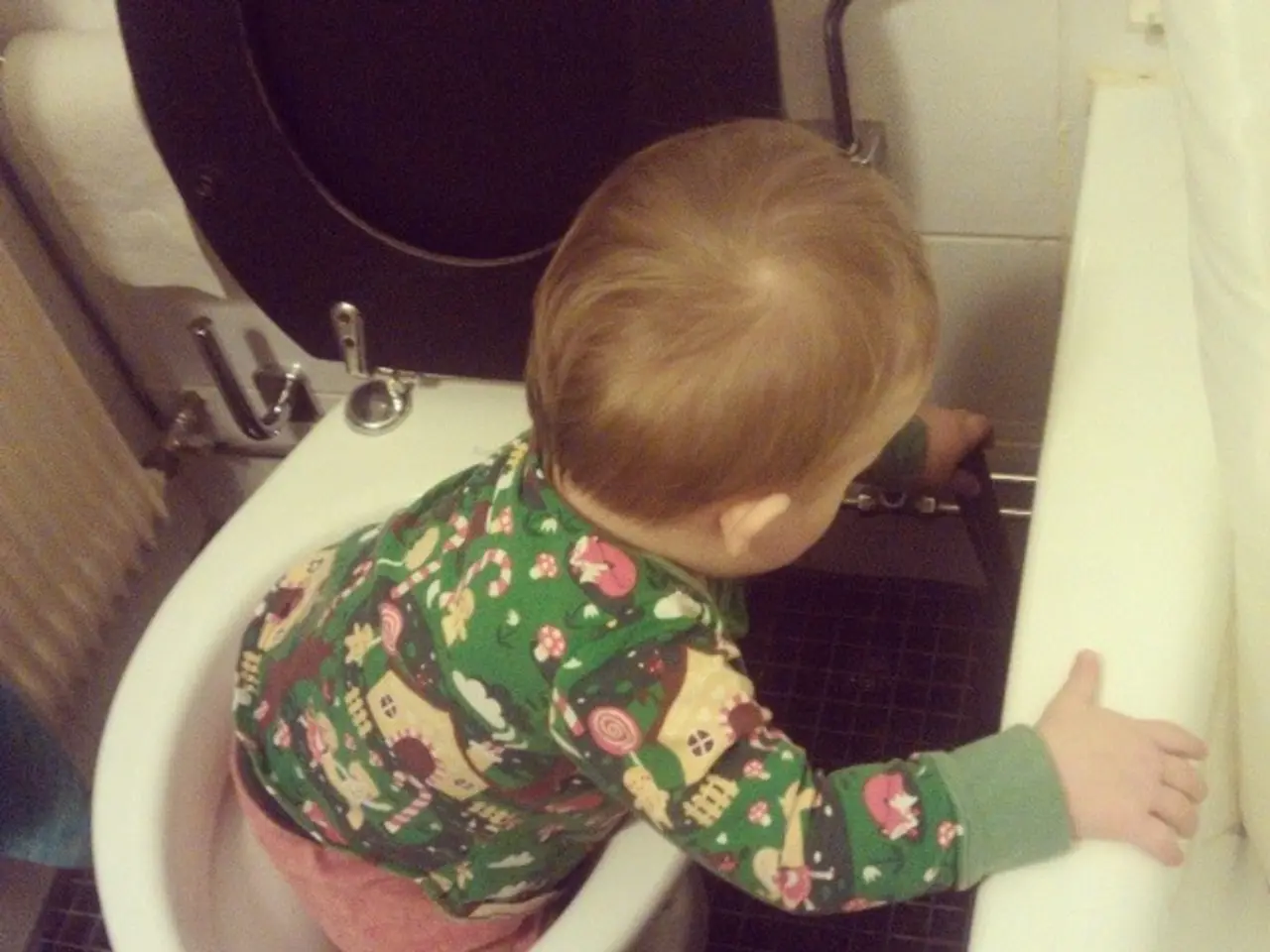Children's Digestive Issues: Prescription Drugs and Household Solutions
In the journey of parenthood, ensuring the health and well-being of children is paramount. One common issue that may arise is constipation, which can cause discomfort and distress for children. This article provides an overview of various methods that can help alleviate constipation in children, along with some important precautions.
Firstly, it's essential to recognise that constipation in children might indicate an underlying condition that requires medical attention. Parents and caregivers should notify their child's doctor if the child experiences severe or persistent constipation, or additional symptoms such as abdominal pain, bloating, or blood in the stool.
Certain herbs, such as senna and slippery elm, might help relieve constipation in children, but they should be used with caution and under a healthcare professional's guidance. Laxatives and enemas should only be administered to children according to a doctor's or pharmacist's instructions.
Probiotics, found in foods like yogurt, kefir, traditional buttermilk, sour pickles, sauerkraut, and probiotic supplements, may also help relieve constipation in children. Abdominal massage may help stimulate the digestive tract and promote bowel movements, but more studies are necessary to confirm these effects.
Establishing a toilet routine can help regulate bowel movements and prevent constipation. Exercise is another important factor in maintaining regular bowel movements, as it encourages bowel movements and should be encouraged in children. Prune juice can help the stool and promote bowel movements, but giving too much juice can lead to excessive sugar intake.
When it comes to treating constipation, certain types of laxatives are commonly used. Lactulose, sodium picosulphate, and macrogol (polyethylene glycol/PEG) are among the most common. Lactulose works as a stool softener, making bowel movements easier and less painful. Macrogol (PEG) and sodium picosulphate are also effective, with PEG drawing water into the large intestine to soften stool, while sodium picosulphate is a stimulant laxative encouraging bowel contractions.
Stimulant laxatives can also be administered as suppositories inserted into the rectum, acting quickly to stimulate intestinal contractions and relieve severe constipation. However, they are generally reserved for short-term use due to the risk of intestinal dependence over prolonged use.
These laxatives aim to produce soft, formed stools that are easier and less painful for the child to pass. Osmotic laxatives like PEG cause water retention in the stool, improving softness and frequency of defecation. Stimulant laxatives increase intestinal motility, helping move stool through the colon faster, but they are used cautiously due to potential side effects and dependency risks.
Long-term treatment with laxatives may be necessary for several months to maintain regular bowel movements and prevent recurrence of constipation and soiling. Additional approaches often accompany laxative treatment, such as dietary changes, toilet training, and encouraging proper toilet posture. Stimulant enemas/suppositories provide a faster relief option but are generally used only when oral laxatives are insufficient or for disimpaction.
It's important to note that some complementary therapies may cause side effects or interact with certain medications or supplements. Parents and caregivers should never use complementary therapies in place of prescription medications and treatments. Chiropractic care may help alleviate constipation in some children, but more research is necessary to determine its effectiveness.
In summary, lactulose, sodium picosulphate, and macrogol (PEG) are the most common laxatives, with stimulant laxatives used briefly as suppositories/enemas to relieve severe constipation; all aim to soften stool and/or promote intestinal motility for easier bowel movements in children. Increasing water intake can also help soften stool and make it easier to pass. Always consult with a healthcare professional before implementing any treatment for constipation in children.
[1] Mayo Clinic, Constipation in Children [2] Cleveland Clinic, Constipation in Children [3] NHS, Constipation in children [4] KidsHealth, Constipation
- In the realm of health and wellness, probiotics found in yogurt, kefir, and other foods can potentially aid in alleviating constipation, a common issue in children.
- It's crucial for parents and caregivers to be vigilant about medical-conditions, such as chronic diseases like chronic kidney disease or respiratory conditions, as constipation might indicate an underlying issue.
- Certain herbs like senna and slippery elm may help with constipation, but they should only be used under a healthcare professional's guidance and with caution.
- A child's doctor should be consulted promptly if a child experiences severe or persistent constipation, or additional symptoms such as abdominal pain, bloating, or blood in the stool.
- Fitness and exercise encourage regular bowel movements, which can help prevent constipation in children.
- Mental health plays a role in overall well-being; stress and anxiety can manifest physically, affecting digestion and potentially causing constipation.
- Skin care is important for general health, but products containing CBD may interfere with certain medical conditions or medications, so care should be taken when using them.
- Constipation can lead to chronic conditions like psoriasis if left untreated, making it essential to follow proper treatments and therapies recommended by healthcare professionals.
- Skin-care, including the treatment of skin-conditions like psoriasis, should be approached with caution and under the guidance of medical experts to ensure safe and effective treatments.
- Pfizer, along with other medical-companies, has developed various medicines and therapies for treating constipation and other medical-conditions, providing options for healthcare professionals to assist children.
- Nutrition plays a vital role in maintaining good digestive health, with a balanced diet promoting healthy bowel movements and preventing constipation.
- Additional steps, such as establishing a toilet routine, encouraging proper toilet posture, and dietary changes, often accompany laxative treatment to help regulate bowel movements and prevent constipation in children.




